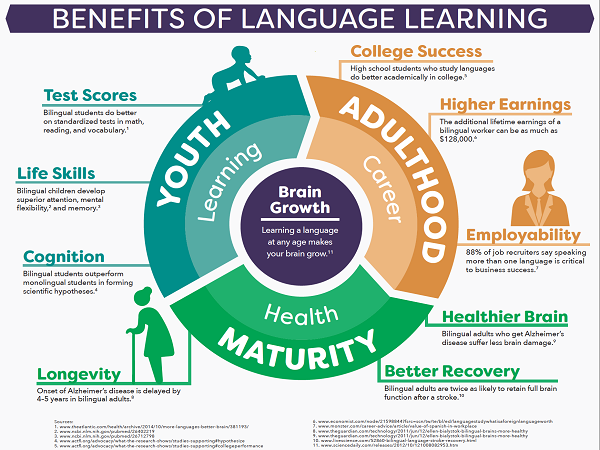Language is a dynamic and always-changing communication system that is influenced and reflected in the history, culture, and socioeconomic changes of a particular set of speakers. Linguistic evolution is the process by which languages evolve over time, much like biological evolution. This phenomenon includes a wide range of factors, including phonological shifts, grammatical modifications, lexical additions and deletions, syntactic and semantic changes, and more, that result in changes in language. Understanding the social and historical dynamics that shape language change requires an understanding of the complex mechanisms driving linguistic evolution, which is illuminated by this field of research.
Download FREE English Worksheets!
Evolution of Language Over Time
Linguistic evolution is a natural process brought on by a number of variables, including generational disparities, migration, technology breakthroughs, and cultural exchanges. These forces cause languages to gradually change, giving rise to new linguistic traits and the obsolescence or conversion of preexisting ones. Languages change over time in response to shifting environmental conditions, just like organisms do. They adapt to their speakers' changing settings and requirements.
Different Changes Through Linguistic Evolution
Linguistic evolution encompasses different types of language change:
- Phonological Changes: These involve altering how sounds in a language are pronounced. Variations in pronunciation can eventually cause modifications to vowel and consonant patterns, which in turn alter a language's overall phonetic structure.
- Grammatical Changes: As a language's grammar structure evolves, so does word order, tense, aspect, mood, and other grammatical features. These adjustments usually reflect shifts in speakers' perceptions of agency, time, and relationships.
- Lexical Changes: Through a number of methods, such as word synthesis, word borrowing from other languages, and term repurposing, languages are always adding new vocabulary. In the interim, some words could become archaic or take on new significance.
- Semantic Changes: Changes in society standards or cultural developments can cause words to change in meaning over time. For example, neutral terms might now have favorable or unfavorable meanings.
- Syntactic Changes: Sentence structure is another area that can alter. For instance, word order may change or old structures may give way to new ones.
Start Learning English – Get FREE Worksheets!
Causes for Evolution
Several factors contribute to linguistic evolution:
- Contact and Interaction: Language changes frequently occur as a result of interaction with other individuals. This may result in the acquisition of words, phrases, and grammatical constructions through immigration, colonization, trade, or conquest.
- Social and Cultural Influences: Changes in social norms, values, and cultural practices can lead to linguistic shifts. Language reflects societal attitudes, and as these change, so does the way people express themselves.
- Technological Advances: The introduction of new technologies can necessitate the creation of new terms to describe these advancements. This is particularly evident in fields such as computing and communication.
- Generational Differences: Language innovations brought forward by younger generations frequently involve modifications to vocabulary, pronunciation, and slang. These inventions may someday gain widespread acceptance.
Language Evolution in Action
One notable example of linguistic evolution is the transformation of Old English into Modern English. The Norman Conquest of England in 1066 brought about significant changes. The Normans spoke Old Norman, a language of Latin origin with Germanic influences. As a result of this conquest, English absorbed a substantial number of Norman French words, expanding its vocabulary and altering its phonology and grammar. This historical event illustrates how language change can be driven by political and social shifts.
In parallel, throughout the past few decades, digital communication and the Internet have had a significant impact on language change. There are now new acronyms, slang phrases, and abbreviations unique to online platforms like messaging because of the necessity to communicate ideas clearly and concisely. The term "LOL," for example, has evolved from a straightforward abbreviation that meant "laugh out loud" to a more complex way of expressing agreement or joy.
The Role of Language Preservation
While linguistic evolution is a natural and ongoing process, there is also a need to preserve languages as cultural artifacts and tools for communication. Many languages are endangered due to factors such as globalization, language shift, and the dominance of major languages in education and media. Linguists work to document endangered languages and revitalize them through language revitalization programs and initiatives.
Book FREE English Trial Classes Now!
In the end, language development is a complicated and dynamic process that is influenced by several social, cultural, technological, and generational factors. Languages change to suit the ever-changing requirements and circumstances of the people who speak them, just like animals do. Linguists investigating linguistic evolution obtain important insights into the social, historical, and cultural variables impacting language development. This understanding not only helps us to appreciate the vast array of languages spoken worldwide, but it also sheds light on the interesting relationship between language and human civilization.

 Students/Staff
Students/Staff Parents
Parents ElevatEd
ElevatEd-4.png)




-Nov-18-2025-03-57-47-3267-AM.png?width=360&length=360&name=401x226%20(6)-Nov-18-2025-03-57-47-3267-AM.png)



-Jul-22-2025-03-16-52-8797-AM.png?width=360&length=360&name=401x226%20(6)-Jul-22-2025-03-16-52-8797-AM.png)






